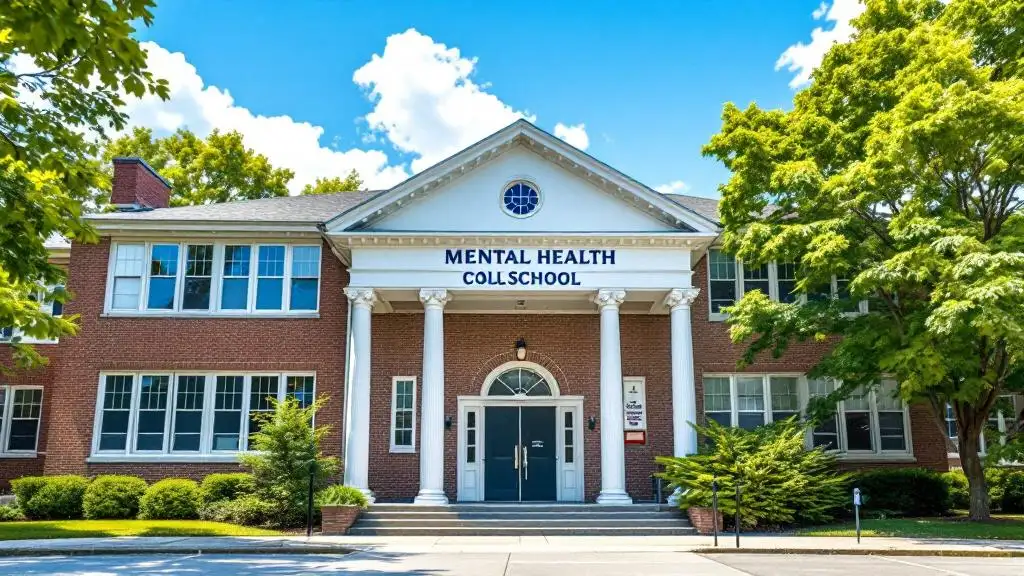Understanding the Scope of Change
The COVID-19 pandemic has indelibly transformed the lives of adolescents worldwide, leading to significant behavioral, emotional, and developmental shifts. As they navigate a landscape marked by disrupted routines, social isolation, and increased mental health challenges, it is essential to understand the scope of these changes and develop effective strategies to support their well-being. This article explores the complex landscape of teen behavioral health post-pandemic, examining underlying mechanisms, observed changes, and evidence-based interventions to foster resilience and recovery.
The Growing Mental Health Crisis Among Youth
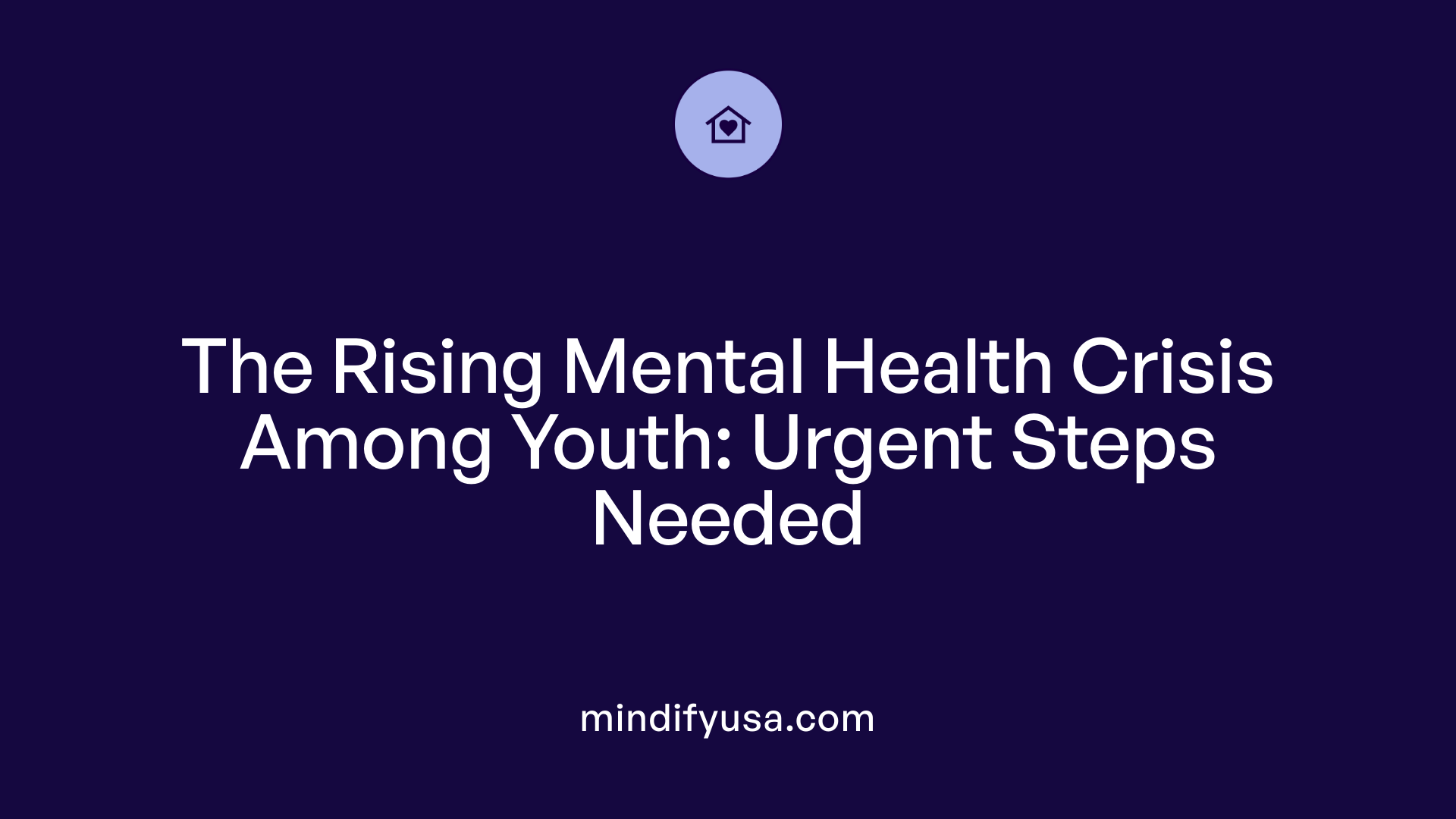
Increase in psychiatric emergencies
The COVID-19 pandemic has led to a notable surge in mental health emergencies among adolescents. For instance, in 2022 in Tuscany, Italy, there was a significant rise in emergency psychiatric admissions for minors, totaling 193 cases—averaging about 3.7 cases each week. These emergency visits predominantly involve youths facing urgent mental health concerns that often require immediate intervention.
Common diagnoses such as suicidality, self-harm, agitation, eating disorders
The main reasons for these emergencies include diagnoses like suicidality and self-harm, which reflect severe emotional distress. Other frequent issues involve agitation and eating disorders, highlighting both behavioral and psychological struggles worsened by the pandemic's disruptions.
Infrastructure gaps in mental health services
Despite the rising need, there is a substantial 'funnel effect' where many minors presenting in emergency settings are not transferred to specialized mental health facilities due to capacity issues. The existing neuropsychiatric inpatient resources for children and adolescents in Tuscany are limited, underscoring an infrastructure gap that hampers effective mental health care for young individuals.
What mental health challenges do teens face post-pandemic, and what symptoms are common?
Post-pandemic, many teenagers grapple with increased anxiety, depression, and internalizing problems like social withdrawal. Studies show neurobiological changes, including accelerated brain aging evidenced by cortical thinning and reductions in regions such as the hippocampus and amygdala, which are crucial for memory and stress control. These structural alterations suggest biological effects of prolonged stress and trauma during the pandemic. Correspondingly, there has been an increase in urgent mental health visits among adolescents, including higher rates of suicidal thoughts and behaviors.
Common symptoms observed include heightened anxiety levels, depressive symptoms, difficulty concentrating, and socioemotional disturbances. These issues are linked not only to psychological trauma but also to biological changes in brain development, making early intervention vital.
How has COVID-19 affected adolescent mental health and behavior?
The pandemic's impact on youth mental health is profound. It has caused a rise in anxiety, depression, and internalizing symptoms. Neuroimaging studies have noted significant brain changes like cortical thinning, particularly in regions tied to emotional regulation. These neurobiological alterations, coupled with increased mental health crises, highlight an accelerated brain aging process in adolescents, especially among females.
Furthermore, the pandemic has contributed to behavioral shifts such as decreased motivation, social withdrawal, and increased dependence on social media, which often exacerbates feelings of loneliness and low self-esteem. A rise in substance use, particularly alcohol, was observed temporarily as restrictions eased, while general mental distress persisted.
What are some long-term social, emotional, and behavioral effects of the COVID-19 pandemic on adolescents?
Long-term, the pandemic is associated with heightened internalizing problems like anxiety and depression and externalizing behaviors such as defiance and social withdrawal. Adolescents now demonstrate decreased school engagement, lower intrinsic motivation, and greater reliance on digital interactions. These changes are likely to influence their lifelong social and emotional development, potentially increasing vulnerability to mental health disorders, risky behaviors, and social difficulties.
Research suggests that these behavioral and emotional challenges may persist, influenced by adverse childhood experiences and ongoing societal stressors. Supporting resilience through social support systems, mental health resources, and creating positive social environments is vital for mitigation.
| Aspect | Observation | Implication |
|---|---|---|
| Emergency psychiatric admissions | Increased significantly in 2022 | Need for expanded healthcare capacity |
| Common diagnoses | Suicidality, self-harm, agitation, eating disorders | Focused mental health treatments required |
| Structural deficits | Limited inpatient resources in Tuscany | Infrastructure improvements needed |
| Neurobiological changes | Cortical thinning, brain volume reduction | Biological markers of stress and trauma |
| Behavioral trends | Higher social withdrawal, screen dependency | Long-term social skills may suffer |
| Substance use | Fluctuated with restrictions, increased alcohol use | Prevention programs necessary |
Understanding the multifaceted impact of COVID-19 on adolescent mental health emphasizes the urgent need for improved resource allocation, early intervention programs, and comprehensive support systems. Addressing these challenges now is crucial for fostering healthier developmental trajectories for today’s youth.
Behavioral and Emotional Shifts in the Wake of the Pandemic
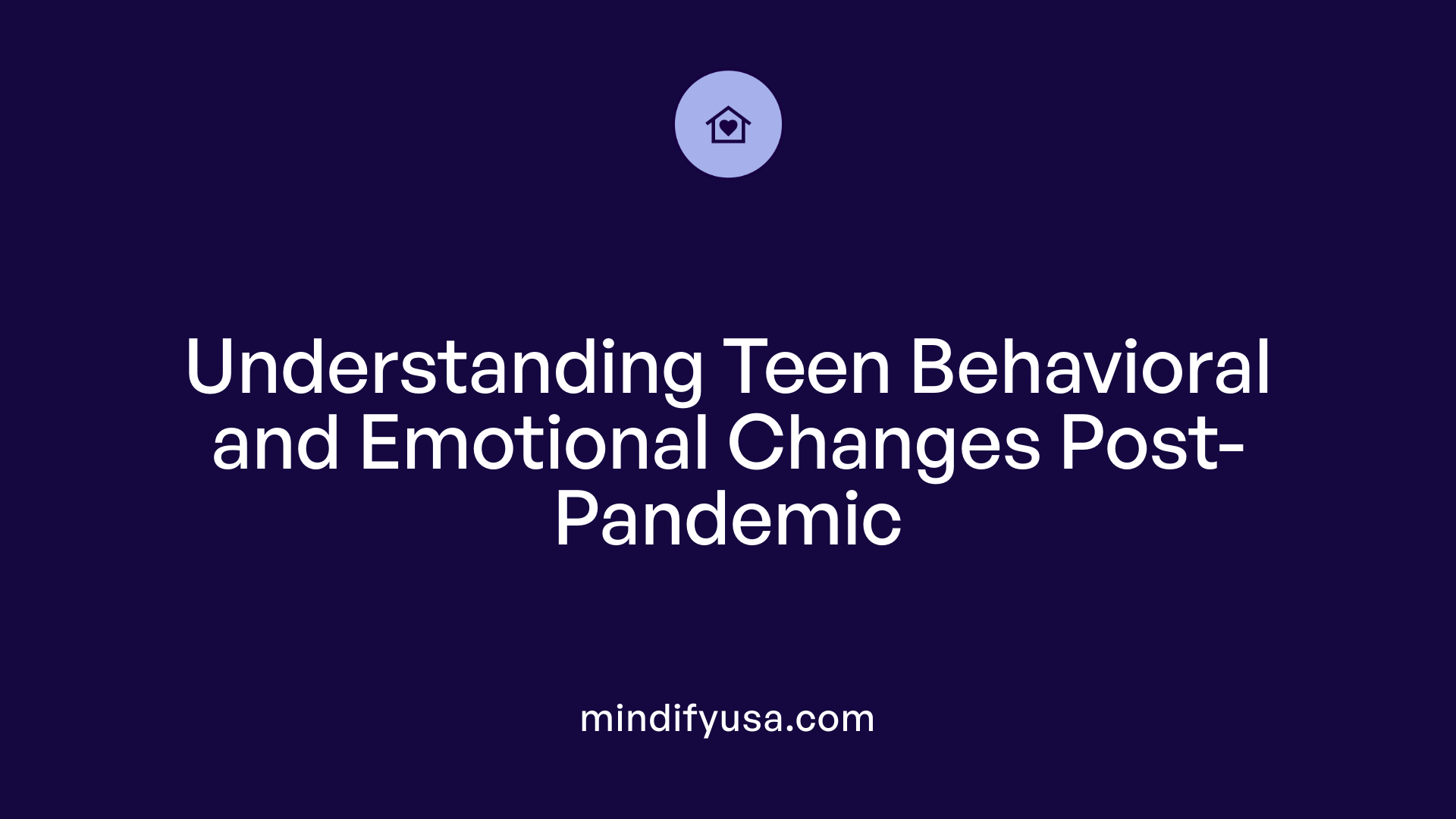
What behavioral changes are observed in teens post-pandemic?
The COVID-19 pandemic has led to notable shifts in adolescent behavior that continue to affect their daily lives and school performance. Many teens now display increased levels of inattention, hyperactivity, opposition to authority, and emotional instability. These behavioral symptoms often manifest as defiance, disrespect, social withdrawal, or difficulty adhering to rules.
School engagement has also been impacted, with students showing diminished motivation, lower intrinsic interest in learning, and challenges in maintaining meaningful connections with teachers and peers. These changes can interfere with academic progress and social development.
Furthermore, there is a rise in social media addiction and screen dependency, which can exacerbate behavioral issues such as impulsivity, paranoia, or online conflicts. The combination of these factors points to a broader impact of the pandemic on adolescent behavioral regulation and social adaptation.
What mental health challenges do teens face post-pandemic, and what symptoms are common?
Teens are experiencing increased mental health problems following the pandemic, including heightened anxiety, depression, and internalizing issues like social withdrawal and emotional distress. Neuroimaging studies reveal biological effects, notably cortical thinning and reduced volumes in regions such as the hippocampus and amygdala, which are responsible for memory, emotion, and stress regulation.
These brain changes suggest an acceleration of neurodevelopmental aging, possibly linked to ongoing stress, adversity, and trauma during the pandemic period. Such biological alterations can increase vulnerability to neuropsychiatric conditions like anxiety and depression.
In addition to biological impacts, there has been a surge in urgent mental health emergencies, with more adolescents requiring hospital visits for psychiatric concerns. Suicide rates among youth have also increased, highlighting the severity of these challenges.
Common symptoms observed include persistent feelings of worry, sadness, hopelessness, and irritability. Many teens also experience difficulties with focus, emotional regulation, and social relationships. The convergence of psychological and biological effects underscores the complex mental health landscape faced by adolescents today.
Disruption of routines and social interactions
School closures, remote learning, and restrictions on in-person socialization disrupted the daily routines of young people during the pandemic. Social interactions, which are vital for emotional and social development, were significantly limited. Adolescents lost regular contact with friends and mentors, leading to increased feelings of loneliness and social isolation.
This disruption has had long-lasting effects on mental health, contributing to feelings of sadness, anxiety, and a decline in overall well-being.
Increase in anxiety, depression, traumatic behaviors
Economic hardships, family stress, and the loss of loved ones during the pandemic heightened feelings of grief and insecurity. Many teens developed traumatic behaviors such as agitation, defiance, and impulsivity as coping mechanisms. The prevalence of depression and anxiety symptoms rose sharply, with some teens exhibiting sleep disturbances, low confidence, and social withdrawal.
The psychological toll was compounded by increased screen time and social media use, which, while providing some connection, also exposed teens to negative messages and cyberbullying.
Changes in motivation and school engagement
The pandemic’s educational disruptions led to decreased motivation and engagement in learning. Many students reported feeling disconnected from school communities, experiencing reduced intrinsic motivation, and struggling with attendance.
School leaders report that over three-quarters of students now experience moderate to severe academic impacts due to mental health challenges. Additionally, behavioral issues such as disrespect and defiance have become more common, often linked to boredom, frustration, or emotional distress.
Addressing these behaviors and mental health concerns requires comprehensive strategies that include fostering supportive environments, integrating social-emotional learning, setting clear goals, and promoting positive relationships.
| Aspect | Observation | Impact/Details |
|---|---|---|
| Behavioral Changes | Increased defiance, inattention, social withdrawal | Disrupts school performance and social ties |
| Mental Health Symptoms | Anxiety, depression, internalizing problems | Affects emotional well-being and daily functioning |
| Neurobiological Effects | Cortical thinning, reduced hippocampal, amygdala volumes | Indicates accelerated brain aging linked to stress |
| Social Interaction Disruption | Loss of peer contact, social isolation | Increased loneliness and emotional distress |
| School Engagement | Lower motivation, decreased attendance | Challenges in academic and social development |
This complex intersection of behavioral, emotional, and biological shifts illustrates the profound impact of the pandemic on adolescent mental health, emphasizing the need for targeted support and intervention.
More research and resources: Search for "Teen behavioral changes post-COVID" for detailed insights and ongoing studies on this significant topic.
The Role of Social Support and Digital Interaction
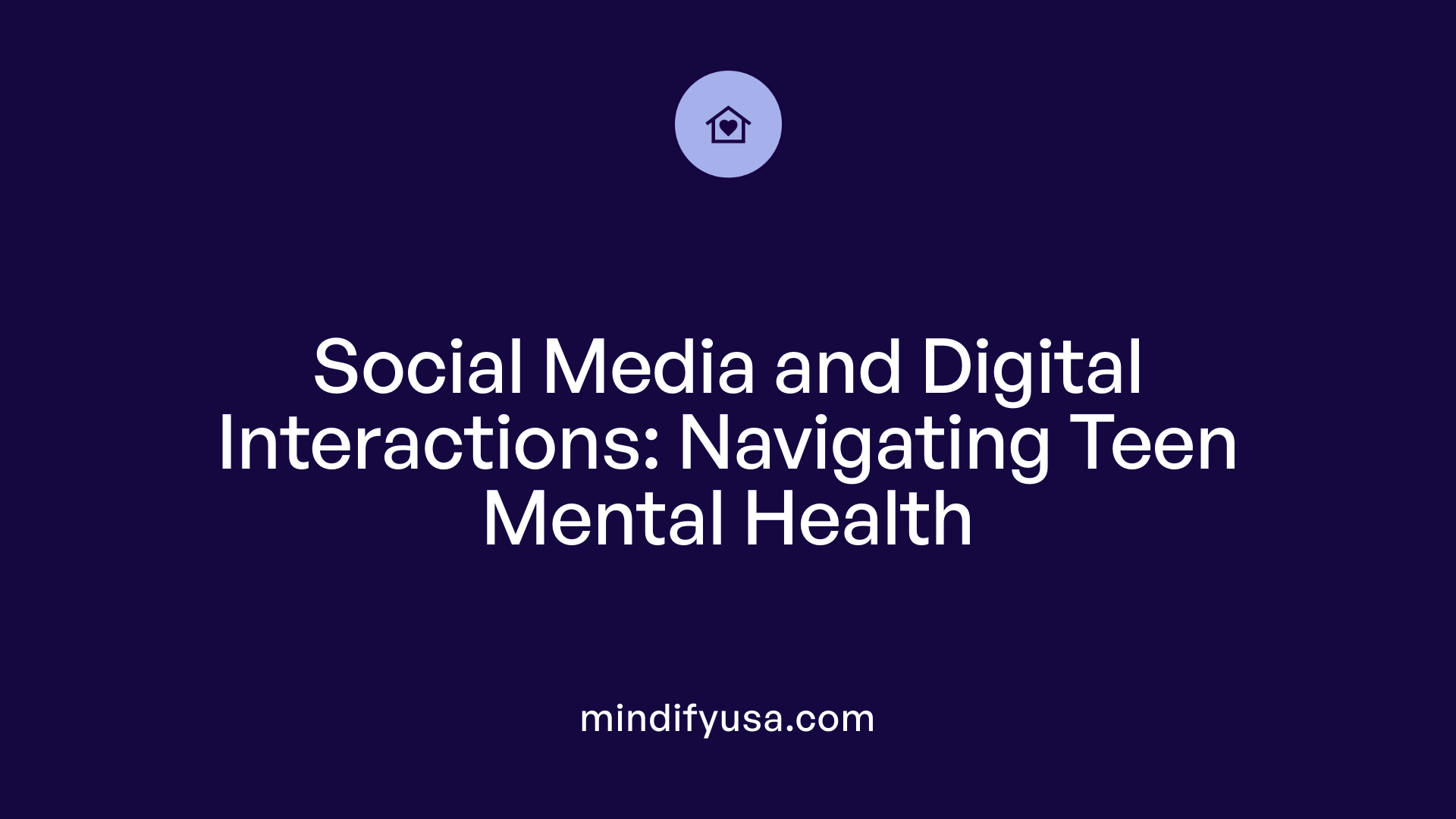
How does social media affect teen mental health?
Social media plays a complex role in adolescent mental health. On one hand, it provides avenues for connection, self-expression, and support; on the other hand, it can contribute to negative outcomes. Excessive social media use, often exceeding three hours daily, is linked with increased risks of anxiety, depression, and poor self-esteem.
Exposure to idealized images and curated content fosters social comparison, which can lead to feelings of inadequacy and body dissatisfaction. Cyberbullying and online harassment further exacerbate these issues, potentially resulting in suicidal thoughts and risky behaviors.
Research indicates that reducing social media exposure can lead to immediate improvements in mood and self-perception, especially among vulnerable youth. Recognizing these risks, experts recommend setting boundaries around social media use, such as limiting screen time, encouraging mindful engagement, and promoting positive online interactions.
While social media offers opportunities for peer support and validation, unmoderated use can also increase loneliness and Fear of Missing Out (FOMO). To mitigate these effects, strategies like digital literacy education, fostering real-world social skills, and seeking professional mental health support when necessary are essential.
In summary, responsible and mindful engagement with social media is crucial to protect and enhance adolescent mental health, especially during the vulnerable post-pandemic recovery period.
Long-Term Effects and Developmental Concerns
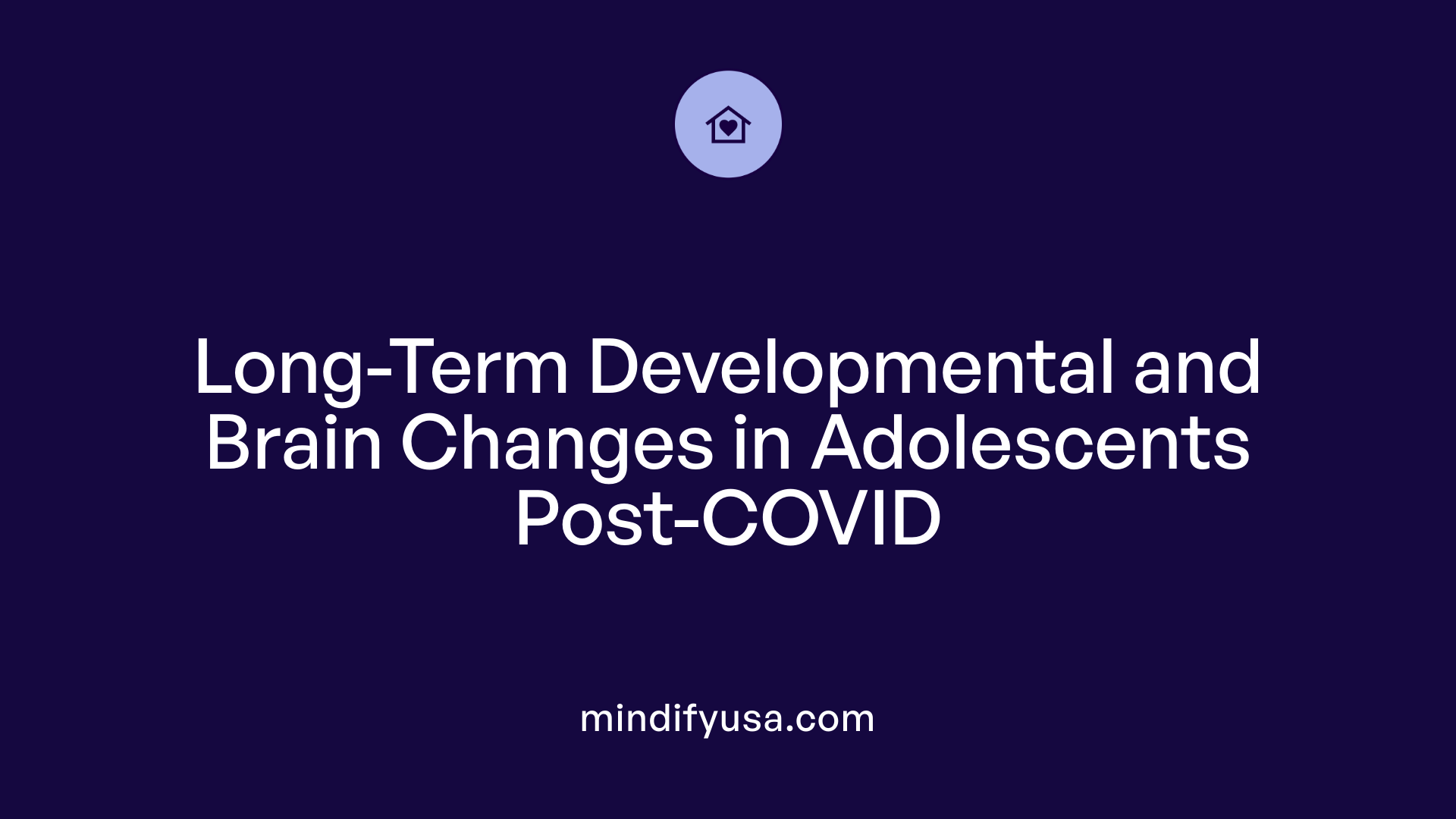
What long-term social, emotional, and behavioral effects of the COVID-19 pandemic have been observed?
Research indicates that adolescents may experience increased internalizing problems, emotional disturbances, and behavioral challenges such as defiance and poor social interactions following the pandemic. Many youths are now showing signs of persistent anxiety, depression, and behavioral disruptions that can extend well beyond the immediate pandemic period. These issues include increased defiant behaviors, social withdrawal, and difficulties in peer relationships. Notably, the impact on social skills and emotional regulation could linger, affecting adolescents’ ability to form healthy relationships and cope with stress later in life.
How has COVID-19 affected adolescent brain development?
Research from the University of Washington highlights that COVID-19 lockdowns have quantitatively accelerated brain maturation among adolescents. This study revealed that, during the pandemic, female teens experienced an average of 4.2 years of accelerated development, while males showed about 1.4 years of advanced brain age.
The study tracked cortical thinning across various brain regions, a natural process during typical adolescence associated with neural pruning and maturation. However, the accelerated thinning observed raises concerns because increased cortical thinning has been linked to higher risks of neuropsychiatric conditions such as anxiety and depression, which often emerge during this developmental window.
Pathways connecting social disruption—such as reduced face-to-face interactions and reliance on social media—to these neurobiological changes suggest that social and environmental factors may significantly influence brain development during adolescence. Although some degree of recovery might occur as social interactions return to normal, the persistent acceleration raises questions about potential long-term implications.
Developmental delays and long-term consequences
The pandemic’s impact extends beyond mental health and into developmental domains. Many children and adolescents experienced delays in language, motor, and social skills due to disrupted routines, closures of learning institutions, and reduced peer interactions. Such delays can have cascading effects, potentially hindering academic progress, social integration, and emotional resilience.
Furthermore, associated developmental challenges include delayed identity formation and difficulties with self-regulation. The persistent stressors, coupled with interrupted schooling, may heighten the risk for ongoing behavioral problems, including defiance, attention issues, and poor executive functioning.
Long-term social and emotional impacts
The social landscape of adolescents has been fundamentally altered, with less in-person socialization and an over-reliance on digital communication. While online platforms have offered ways to stay connected, they often come with drawbacks such as exposure to cyberbullying, social comparison, and decreased face-to-face emotional bonding.
These shifts contribute to lower self-esteem, increased loneliness, and persistent feelings of social disconnectedness, which can reduce resilience against future stressors. Both research and clinical observations suggest that these emotional and social challenges could predispose a generation of youth to mental health issues, with potential long-term trajectories including increased incidence of mood disorders, substance misuse, and social skill deficits.
| Aspect | Observed Impact | Underlying Mechanism | Long-term Concerns |
|---|---|---|---|
| Brain development | Accelerated cortical thinning | Social and environmental disruption | Increased risk for anxiety and depression |
| Developmental delays | Language, motor, social skills lag | School closures, less peer interaction | Impaired academic, social, and emotional growth |
| Emotional health | Increased anxiety, depression | Isolation, family stress | Higher prevalence of mood disorders and social withdrawal |
| Social skills | Reduced face-to-face interaction | Pandemic restrictions | Loneliness, social disconnectedness |
Understanding these interconnected effects underscores the importance of targeted interventions to support adolescent growth and emotional well-being as societies recover from the pandemic.
Implementing Support Systems and Resilience Building
What strategies are effective in addressing post-pandemic youth behavioral issues?
Post-pandemic behavioral challenges among adolescents require multifaceted approaches. Schools should strive to create inclusive environments that foster a sense of belonging and safety. Incorporating social-emotional learning (SEL) programs helps students develop emotional regulation, empathy, and resilience. Establishing clear behavioral expectations and consistent routines can provide stability, which is crucial during transitions.
Restorative practices and positive behavioral interventions, such as Positive Behavioral Interventions and Supports (PBIS), promote respectful, community-focused behavior and reduce disciplinary actions. Family involvement is equally vital; supporting parental mental health and encouraging open, emotionally literate communication strengthen youth resilience.
Community strategies include widespread mental health screening and easy access to resources like counseling and peer support groups. These efforts aim to reduce disparities, especially among vulnerable populations. By adopting an integrated approach that involves schools, families, and community organizations, it is possible to build a supportive infrastructure that fosters positive behaviors and emotional well-being.
What preventative measures can help strengthen teens' resilience during this transition?
Preventive actions are essential for reinforcing resilience among teens facing new social and emotional challenges. Maintaining structured daily routines provides predictability, helping adolescents feel more secure. Encouraging outdoor activities and physical exercise contributes to emotional regulation and physical health.
Reducing passive screen time and promoting social interactions in safe, offline environments mitigate feelings of loneliness and social withdrawal. Schools and families should focus on teaching emotional literacy, stress management techniques, and coping strategies that empower teens to handle adversity.
Creating safe spaces—whether in classrooms or community centers—for honest discussions about mental health can destigmatize seeking help and encourage early intervention. Developing community support networks, such as mentorship programs, can provide additional layers of emotional backing.
Early access to mental health services acts as a buffer against long-term impacts of social disruption. Overall, fostering a culture of openness, support, and proactive engagement equips adolescents with the skills needed to navigate ongoing challenges effectively.
| Approach | Key Components | Intended Outcomes |
|---|---|---|
| School-wide initiatives | Inclusive environments, SEL, restorative practices | Reduced behavioral issues, increased belonging |
| Family involvement | Parental mental health support, emotional literacy | Stronger family bonds, better coping skills |
| Community support strategies | Screening programs, accessible resources, peer groups | Enhanced resilience, reduced disparities |
Additional efforts to build adolescent resilience include:
- Promoting outdoor and community-based activities
- Implementing school-based mental health programs
- Engaging youth in decision-making processes
- Training educators and parents in emotional and behavioral management
By implementing these strategies, communities can create a resilient foundation that supports adolescent mental health through current and future challenges.
Addressing Service Gaps and Increasing Access
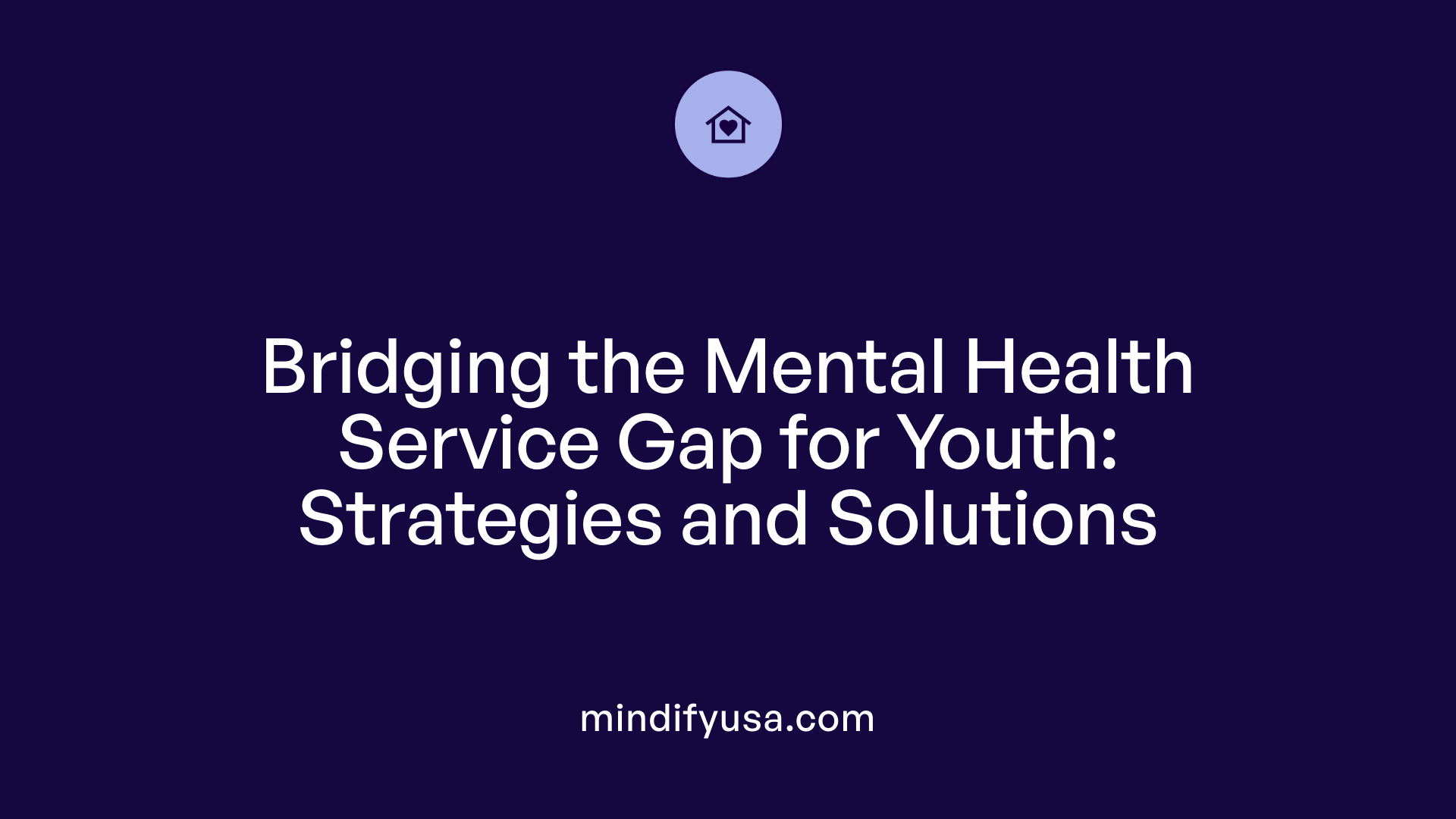
What are some evidence-based strategies and support mechanisms for teens experiencing mental health challenges after the pandemic?
Supporting adolescents through the ongoing mental health challenges requires multi-faceted approaches. Creating positive and safe environments in schools has proven effective, fostering a sense of belonging and security that can buffer against stress and anxiety.
Implementing and expanding social-emotional learning (SEL) programs helps youths develop resilience, emotional regulation, and coping skills necessary to navigate post-pandemic life. Early identification of mental health changes is critical; staff training to recognize signs of distress allows for timely intervention.
Given the impact of social media on youth mental health—linked to increased anxiety, depression, and low self-esteem—stakeholders must promote healthy social media practices. Educational campaigns that increase awareness about cyberbullying, unrealistic standards, and digital literacy are essential.
Societal involvement must be broad, involving families, educators, healthcare providers, and community organizations. Collaborative efforts can facilitate access to mental health services, reduce stigma, and foster supportive networks.
Special attention should be given to vulnerable groups such as racial minorities and LGBTQ+ youth, who face additional barriers and higher risks.
How can healthcare systems address the current shortages of mental health services for youth?
Addressing the unmet mental health needs of adolescents calls for expanding existing healthcare infrastructure. Schools can serve as primary access points by implementing school-based mental health programs, which provide immediate and convenient support.
Leveraging technology is vital; increasing telehealth services allows providers to reach remote or underserved populations, reducing geographic barriers.
Training more mental health professionals with expertise in adolescent care is crucial. This can be supported through workforce development programs and incentives to specialize in pediatric mental health.
Peer advocate programs, where trained adolescents support peers, can supplement professional services and help de-stigmatize mental health issues.
Integrating mental health screenings into routine pediatric visits ensures early detection. Establishing community resource hubs offers centralized access to diverse services.
Policy initiatives aimed at reducing stigma and increasing funding for youth mental health are fundamental. Such measures support the sustainability of expanded services and improve system capacity.
| Strategy | Description | Expected Impact |
|---|---|---|
| School-based programs | On-site counseling, mental health education | Increased access and early intervention |
| Telehealth expansion | Remote consultations, digital therapy options | Reaching underserved populations |
| Workforce training | Specialized training for providers in adolescent care | Better quality care, increased capacity |
| Peer support initiatives | Trained youth supporters to assist peers | Reduces stigma, enhances engagement |
| Routine screening | Mental health assessments during check-ups | Early detection and treatment facilitation |
| Community resource hubs | Centralized access points for services | Improved resource coordination |
Overall, a combination of policy change, innovative service delivery, and community engagement is essential to bridge the mental health service gap for youth post-pandemic.
Building a Foundation for Future Resilience
Addressing behavioral changes in teens post-pandemic requires a comprehensive approach that combines individual support, community engagement, and systemic change. Investing in mental health infrastructure, fostering supportive relationships, and promoting resilience-building strategies are essential for helping adolescents navigate the lingering effects of the pandemic. By understanding the biological, psychological, and social dimensions of these changes, stakeholders can implement targeted interventions that promote recovery, well-being, and healthy development for the next generation.
References
- Navigating the “Mental Health Crisis” in Adolescents in the Aftermath ...
- Navigating Post-Pandemic Student Behavior: Strategies for ...
- U.S. teens need far more emotional and social support
- Child and adolescent mental health during the COVID-19 pandemic
- Social, Emotional, and Behavioral Effects - NCBI
- The mental and behavioral health crisis in youth: Strategic solutions ...
- What You Need to Know About the Pandemic's Lasting Effects on ...












